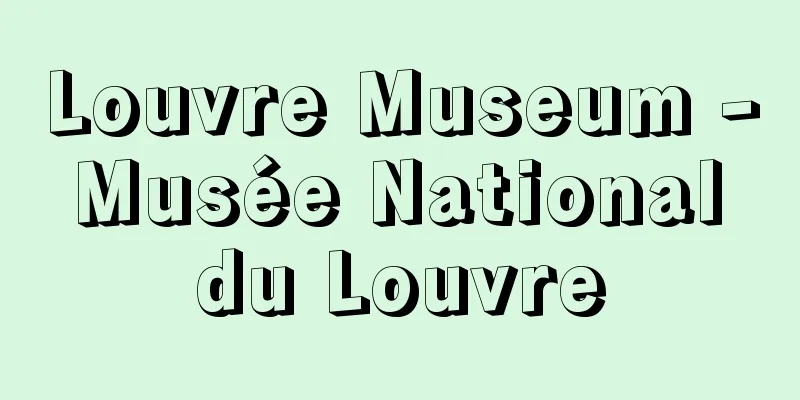Louvre Museum - Musée National du Louvre

|
The Louvre is one of the world's largest national art museums, located in the center of Paris, France, on the right bank of the Seine. The collection began in the 16th century under King Francis I, who was also famous as the patron of Leonardo da Vinci. Successive kings continued to collect after that, and the collection expanded dramatically, especially due to the active promotion of arts policy of Colbert, Minister of Finance under the reign of Louis XIV. The idea of displaying the royal collection at the Louvre Palace had already been prepared in the mid-18th century under the influence of Enlightenment ideas. However, it was not realized until 1793, in the midst of the French Revolution, when the museum opened under the name "Central Museum of Fine Arts of the Republic." In the early 19th century, the museum was renamed "Museum Napoleon," and the collection expanded dramatically at one time due to the numerous war trophies that Napoleon brought back from his expeditions to Italy, Egypt, and other places, but after Napoleon's downfall, most of the items were returned to their respective countries. After that, the government purchased items and private collections donated items one after another, forming a rich collection, which as of 2000 numbered over 300,000 items. The museum also receives 5.8 million visitors per year. The collection consists of seven departments: (1) Ancient Near Eastern and Islamic Art, (2) Ancient Egyptian Art, (3) Ancient Greek, Etruscan, and Roman Art, (4) Sculpture, (5) Arts and Crafts, (6) Painting, and (7) Graphic Arts, as well as the "History of the Louvre and the Medieval Fortress." In 2004, the departments of Asian, African, American, and Oceanian art were opened. Each department holds world-famous masterpieces such as (1) the Statue of Gudea, (2) the Louvre Seated Scribe, (3) the Venus de Milo and the Winged Victory of Samothrace, (4) Michelangelo's The Slave, (5) French Royal Jewels, and (6) Leonardo da Vinci's Mona Lisa and Rubens' Biography of Marie de' Medici. In 1981, President Mitterrand announced the Grand Louvre Plan. This major renovation, which took more than 15 years of construction, was a grand project that marked the end of the 20th century, and transformed the entire Louvre into a museum. In 1989, a glass pyramid designed by I.M. Pei, 21 meters high and 33 meters long at the base, was completed in the center of Place Napoleon as the entrance to the museum. The huge foundation stones of the medieval fortress that remain underground were also made public. In 1993, to commemorate the 200th anniversary of the museum's opening, the former site of the Ministry of Finance in the Richelieu Wing on the Rue de Rivoli side was annexed to the museum, doubling the area of the permanent exhibition. In 1997, the Denon Wing and Sully Wing were renovated, and the Louvre has improved its management and exhibitions, transforming it into a modern museum. The Louvre Museum houses a vast collection of art from ancient times to the first half of the 19th century, but artworks from the second half of the 19th century to the early 20th century are kept by the Musée d'Orsay on the opposite bank of the Seine. The banks of the Seine in Paris, where the museum is located, were registered as a World Heritage Site in 1991 (World Cultural Heritage). [Setsuko Yoshikawa] "World Museums 10: The Louvre Museum" edited by Yoshikawa Itsuji and Horimai Yozo (1978, Kodansha)" ▽ "NHK Louvre Museum" edited by Takashina Shuji (7 volumes, 1985-86, Japan Broadcasting Publishing Association)" ▽ "The Louvre and the Art of Paris" edited by Yoshikawa Itsuji (8 volumes, 1985-88, Shogakukan)" [References] | | | | | | | | |One of the world's largest art museums. It opened in 1793 as the central museum to display the royal collection within the Louvre Palace. In 1989, the glass pyramid was completed in Place Napoleon. Part of the World Heritage Site "Banks of the Seine in Paris" (registered in France in 1991) France Paris ©Shogakukan "> Louvre Museum Source: Shogakukan Encyclopedia Nipponica About Encyclopedia Nipponica Information | Legend |
|
フランス、パリのほぼ中心、セーヌ川右岸に位置するルーブル宮殿内にある世界最大級の国立美術館。 コレクションはレオナルド・ダ・ビンチの保護者としても有名な16世紀のフランソア1世に始まる。その後歴代の王が蒐集(しゅうしゅう)を続け、とくにルイ14世治世下の財務長官コルベールの積極的な芸術振興政策によってコレクションは飛躍的に拡充した。王室コレクションをルーブル宮殿内で公開するという構想は啓蒙(けいもう)思想の影響のもとにすでに18世紀なかばに準備されていた。しかしそれが実現したのはフランス革命のさなか1793年であり、共和国の「中央美術館」と命名されて開館した。19世紀初頭には、「ナポレオン美術館」と改称され、ナポレオンがイタリアやエジプトなどへの遠征からもちかえったおびただしい戦勝品により、コレクションは一時飛躍的に増大したが、ナポレオン失脚後にその大部分がそれぞれの国に返還された。その後、政府による購入、個人コレクションの寄贈などがあいつぎ、充実したコレクションが形成され、2000年現在、その数は三十数万点を超える。また、来館者数は年間580万人にのぼっている。 コレクションの内容は、(1)古代オリエント美術・イスラム美術、(2)古代エジプト美術、(3)古代ギリシア・古代エトルリア・古代ローマ美術、(4)彫刻、(5)工芸、(6)絵画、(7)グラフィック・アートの7部門および「ルーブルの歴史と中世の城砦(じょうさい)」から構成される。2004年にアジア、アフリカ、アメリカ、オセアニア美術部門が開設される。それぞれの部門は(1)『グデア像』、(2)『ルーブルの書記座像』、(3)『ミロのビーナス』『サモトラキのニケ』、(4)ミケランジェロの『奴隷』、(5)フランス王室の宝飾品、(6)レオナルド・ダ・ビンチの『モナ・リザ』、ルーベンスの『マリ・ド・メディシスの一代記』など、世界的名品を所蔵する。 1981年、大統領ミッテランは「大ルーブル計画」を発表。15年以上にわたる工事を必要とするこの大改造は20世紀を締めくくる壮大なプロジェクトであり、これによりルーブル宮全体が美術館として生まれ変わった。1989年にはナポレオン広場中央に美術館への入り口として、イオ・ミン・ペイ設計の高さ21メートル、底面辺長33メートルのガラス張りのピラミッドが完成した。また地下に残る中世の城砦の巨大な礎石も公開された。さらに開館200年を記念する1993年には、リボリ通り側のリシュリュー翼の旧大蔵省跡が美術館に併合され、常設展示面積が倍増した。1997年にはドノン翼とシュリー翼が再整備されるなど、ルーブルはその運営・展示を改善して近代化された美術館として変貌を遂げている。 ルーブル美術館は古代から19世紀前半までの厖大(ぼうだい)なコレクションを収蔵するが、19世紀後半から20世紀初頭にかけての芸術作品はセーヌ川対岸のオルセー美術館に引き継がれている。なお、この美術館のあるパリのセーヌ河岸は1991年に世界遺産の文化遺産として登録されている(世界文化遺産)。 [吉川節子] 『吉川逸治・堀米庸三編『世界の博物館10 ルーブル博物館』(1978・講談社)』▽『高階秀爾監修『NHKルーブル美術館』全7巻(1985~86・日本放送出版協会)』▽『吉川逸治総編集『ルーヴルとパリの美術』全8巻(1985~88・小学館)』 [参照項目] | | | | | | | | |世界最大級の美術館。1793年王室コレクションをルーブル宮殿内で公開する中央美術館として開館した。1989年、ナポレオン広場にガラスのピラミッドが完成した。世界文化遺産「パリのセーヌ河岸」の一部(フランス・1991年登録) フランス パリ©Shogakukan"> ルーブル美術館 出典 小学館 日本大百科全書(ニッポニカ)日本大百科全書(ニッポニカ)について 情報 | 凡例 |
<<: Le Play (English) Pierre Guillaume Frédéric Le Play
Recommend
Asuwa
The name of Echizen Province since ancient times, ...
Gerontology
… Weber classifies legitimate rule into three pur...
Cownepole - Cownepole
Former name of the city of Kanpur in northern Indi...
The origin of Alaya-vijnana
...In other words, the ultimate cause is ignoranc...
Seal - Ingyo
〘 noun 〙① = in (seal) ① Seal. ※Daigoji Shinyoroku ...
Lusitania (passenger ship) (English name) Lusitania
…It was a four-shaft ship with a length of 231.6m...
Copper Pot - Dowan
A bronze kanamari (pot). It is a type of Buddhist ...
Utamakura - Utamakura
A term used in the study of waka poetry. In the b...
Kasubuchi
...The local pronunciation is "Ochi". I...
QSL Card - QSL Card
...Based on the principle of reciprocity, license...
《Your Faust》 - Your Faust
…In his early days, he was strongly influenced by...
Michael Baius
1513‐89 Flemish theologian. Also known as Bajus. H...
Dangerous Liaisons
1. A full-length novel by the French author Choder...
Chiba-shi
Descendants of Tadatsune, of the Yoshibumi line o...
Neurosyphilis
(1) Neurosyphilis Concept Neurosyphilis is a neuro...









